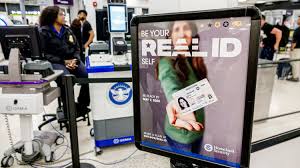
Breaking News
 The Hidden Secrets of Natural Milk
The Hidden Secrets of Natural Milk
 Diddy Trial Drama: Star Witness Vanishes Ahead Of Explosive Testimony
Diddy Trial Drama: Star Witness Vanishes Ahead Of Explosive Testimony
 PTSD treatment that excites a nerve in your neck wipes symptoms completely
PTSD treatment that excites a nerve in your neck wipes symptoms completely
 High-tech lactation pad measures medication in mothers' milk
High-tech lactation pad measures medication in mothers' milk
Top Tech News
 Cab-less truck glider leaps autonomously between road and rail
Cab-less truck glider leaps autonomously between road and rail
 Can Tesla DOJO Chips Pass Nvidia GPUs?
Can Tesla DOJO Chips Pass Nvidia GPUs?
 Iron-fortified lumber could be a greener alternative to steel beams
Iron-fortified lumber could be a greener alternative to steel beams
 One man, 856 venom hits, and the path to a universal snakebite cure
One man, 856 venom hits, and the path to a universal snakebite cure
 Dr. McCullough reveals cancer-fighting drug Big Pharma hopes you never hear about…
Dr. McCullough reveals cancer-fighting drug Big Pharma hopes you never hear about…
 EXCLUSIVE: Raytheon Whistleblower Who Exposed The Neutrino Earthquake Weapon In Antarctica...
EXCLUSIVE: Raytheon Whistleblower Who Exposed The Neutrino Earthquake Weapon In Antarctica...
 Doctors Say Injecting Gold Into Eyeballs Could Restore Lost Vision
Doctors Say Injecting Gold Into Eyeballs Could Restore Lost Vision
 Dark Matter: An 86-lb, 800-hp EV motor by Koenigsegg
Dark Matter: An 86-lb, 800-hp EV motor by Koenigsegg
 Spacetop puts a massive multi-window workspace in front of your eyes
Spacetop puts a massive multi-window workspace in front of your eyes
Real ID Is Not About Keeping You Safe

Today, after nearly two decades of implementation and delays, the federal government's new identification requirements for traveling by plane domestically or entering federal buildings technically go into effect. This federally-compliant ID card—known as Real ID—can only be attained with specific records and documents laid out by the federal government. It's labeled by a black or gold star in the upper right corner.
Even though DHS Secretary Kristi Noem promised that, at least initially, people without a Real ID will only have to face some "extra scrutiny" at security checkpoints, it's safe to assume that, as the full requirement sets in over the next several weeks and months, some number of people will show up to airports unaware that they no longer have the documents required to board their plane. And, because the process of getting through most domestic airports was grueling enough before the deadline, many expect air travel to be especially arduous during the transition.
Because of the absoluteness of this new requirement and the harsh punishments for non-compliance—just picture what would happen to you if you tried to get into a federal building or onto a plane without the accepted forms of ID—it can be easy to write off the Real ID requirement as some new rule that, while annoying, is probably being implemented for a good reason.
It's not.
As mentioned above, the Real ID Act was passed twenty years ago in 2005. It was one of the many measures rolled out in the wake of the 9/11 attacks that was presented to the public as being necessary to ensure that similar attacks would never happen again.

 Node without Consent
Node without Consent

